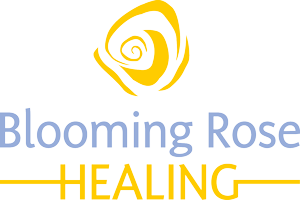A Whale’s Exhale Inspired WhaleBreathing as a Deeply Healing Practice
As we embrace this period of retreat and deceleration, I invite you to ponder the role of the breath.
When I embarked on this journey, I was genuinely perplexed, feeling a touch of madness. My two passions, the human body and whales, seemed worlds apart. Yet, it was while observing gray whales and their synchronized swimming, their harmonious rhythm of breath, that things began to click.
It was a tranquil day at sea and I felt surrounded by serenity when a whale approached our boat. I was determined to connect with it on a heart-to-heart level. As it surfaced, our eyes locked, and I moved in to kiss its head. Unable to reach, I asked the whale to elevate its body, and astonishingly, it complied. The kiss I placed on its head was filled with my profound affection for this majestic creature.
As I raised my head, the whale exhaled, and its breath, along with its unique essence, enveloped me.
Strangely enough, it was whale slime and breath that marked the inception of WhaleBreathing.
I realized that healing power lies in the exhale of breath, the essence of rest.
The poet David Whyte writes, “Rested, we are ready for the world but not held hostage by it, rested we care again for the right things and the right people in the right way. In rest we reestablish the goals that make us more generous, more courageous, more of an invitation, someone we want to remember, and someone others would want to remember too.”
WhaleBreathing is the art of conscious breathing.
Breath enters the body through the diaphragm's contraction, which is the inhale. When whales dive, they take in a massive inhale before submerging, allowing themselves to rest. This is a conscious effort. They maintain brain engagement even in repose.
So, why do they perform voluntary exhales? These expulsions serve to eliminate unwanted waste and release metabolic byproducts generated during cellular respiration, a natural consequence of energy production. This process necessitates waste removal. Similar to us, their exhale facilitates diaphragmatic rest, creating an internal sense of reprieve as the body releases.
When I guide clients through WhaleBreathing, I observe their body and listen closely to detect where their breath is not flowing. This aspect is profoundly significant because wherever the breath doesn’t reach is where chemicals accumulate in the body. This, in turn, leads to blockages hindering the influx of life force and vitality that the body requires. Consequently, metabolic waste accumulates in these restricted areas, resulting in feelings of fatigue and depleted energy.
Interestingly, diaphragmatic rest leads to overall bodily relaxation, and this chiefly occurs during the exhale. However, our modern breathing habits have led to shallow breaths, tension, and resistance. This overload of metabolic waste in our bodies triggers reactions. When excess carbon dioxide accumulates, our bodies react with panic, leading us to rely on lung breathing, which places additional stress on the body.
WhaleBreathing originated from my profound experience of witnessing a whale's exhale, which prompted me to delve deeper into how their diaphragm functions in relation to the human diaphragm. The diaphragm, like any muscle, requires movement. This unique muscle performs two essential functions: contraction and relaxation. The specific effects of a muscle's contraction on the body identify its significance and purpose.
In the whale's body, oxygen is stored in their muscles, allowing them to hold their breath for extended periods. Similarly, as we increase our oxygen levels, our bodies also seem capable of holding the breath longer. The diaphragm's cycle of contraction and relaxation plays a pivotal role in the very essence of life and our breathing rhythms.
The whales bestowed upon me this invaluable gift, and I remain eternally grateful for their love, their exhale, and their breath!

